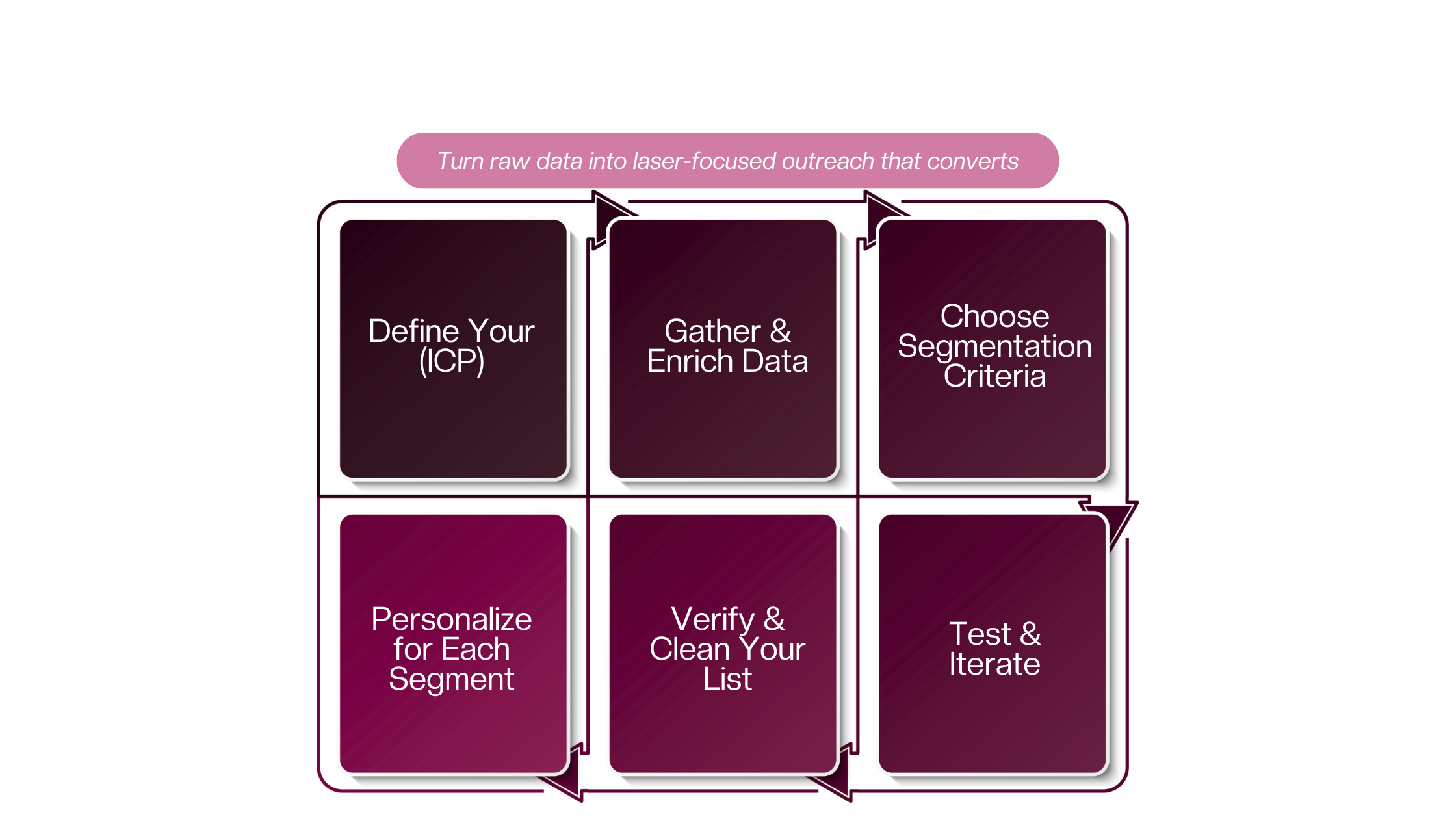Cold emailing isn’t dead, but generic blasts are. Many SaaS founders and B2B sales leaders burn through prospects by sending the same message to everyone, then wonder why their reply rates are so low. The secret to effective outreach is segmentation and targeting.
This involves grouping recipients into smaller, more relevant categories and sending them messages tailored to their specific needs and pain points. This approach transforms a one-size-fits-all blast into a series of personalized conversations.
The Impact of Segmentation and Targeting
Segmentation means dividing your lead list into distinct groups based on common attributes such as industry, company size, role, or buying intent. Targeting is the act of tailoring your message for each segment. This strategy delivers the right message to the right person at the right time.
The data proves its effectiveness. Research consistently shows that segmented campaigns have a measurable impact on email performance. Segmented campaigns enjoy significantly higher open and click-through rates compared to non-segmented ones.
While a 5% reply rate is often considered a benchmark for cold outreach, well-executed campaigns that use segmentation and tailored messaging can achieve 10–20% reply rates in high-fit segments. These numbers aren’t just vanity metrics; higher engagement leads to more meetings booked and more revenue generated.
Segmented outreach offers several key advantages. It boosts open and reply rates by making your subject lines and introductions more relevant. It also improves conversion and return on investment, as targeted email lists produce far higher conversion rates and lower unsubscribe rates.
A better sender reputation is another benefit, since cleaner lists lead to fewer bounces and spam reports, improving your domain’s deliverability. Finally, segmentation provides richer customer insights by revealing which groups engage most with your offer, helping you refine your product positioning and messaging.
Building a Cold Email Segmentation Strategy
A strong cold email strategy begins long before you draft a single message. Here is a simple framework to build a segmentation strategy that works.
1. Define Your Ideal Customer Profile (ICP):
Start by profiling the companies and people most likely to buy from you. Identify key firmographic factors like industry, company size, funding stage, and the technology stack they use. Pinpoint the specific pain points your solution addresses for this profile.
2. Gather and Enrich Data:
Collect demographic, firmographic, technographic, and behavioral data from reliable sources. This can include web forms, analytics tools, and professional networking platforms. Data enrichment tools can automate this step by pulling relevant details to build comprehensive prospect profiles.
3. Choose Meaningful Segmentation Criteria:
Your segmentation criteria should be relevant to your product. Common and effective criteria include:
- Industry or Vertical: Tailor messaging to industry-specific challenges, such as compliance for finance or scalability for SaaS.
- Company Size: Startups often care about affordability and agility, while enterprises prioritize reliability and integrations.
- Job Role and Seniority: Decision-makers respond to strategic benefits, while individual contributors appreciate hands-on efficiency.
- Technographics: Filter companies using a competitor’s platform or those lacking a tool that you provide.
- Behavioral Signals: Segment by engagement with your website, content downloads, or other intent signals.
4. Personalize Your Message for Each Segment:
Personalization goes beyond inserting a first name. Reference a recent funding announcement, the recipient’s tech stack, or a challenge specific to their role. This shows you have done your homework and understand their context.
5. Verify and Clean Your List:
Always verify emails to reduce bounce rates. Keeping your lists clean protects your sender reputation and ensures your efforts aren’t wasted on invalid addresses. A bounce rate below 2% is a good target.
6. Test and Iterate:
Segmentation is an ongoing process. Track key metrics like open, click-through, reply, and conversion rates for each segment. A/B test your subject lines, messaging, and calls-to-action to see what resonates most, and refine your approach based on performance data.

How Clay Supercharges Your Strategy
Clay is a powerful platform that automates the most time-consuming parts of segmentation and targeting. It acts as the research engine behind your outreach. Clay aggregates data from over 130 sources, allowing you to build highly specific lead lists based on flexible filters like role, company size, or funding stage.
Its automated workflows can perform complex searches, like finding founders of SaaS companies using a specific CRM who posted on LinkedIn recently. The platform then enriches these lists with verified contact information and other details.
Using AI, Clay can generate personalized introductions and subject lines based on each prospect’s unique data, enabling personalization at scale. Finally, it integrates with popular cold email platforms and CRMs to push this enriched data directly into your sales sequences, streamlining your entire outreach process.
Final Thoughts
Segmentation and targeting are essential for anyone serious about succeeding with cold email. By grouping your leads into meaningful segments and crafting messages tailored to each group’s pain points, you can dramatically increase engagement and pipeline growth.
Tools like Clay can automate the data enrichment and personalization process, making your outreach more efficient and effective.
Start by defining your ideal customer, gathering rich data, and choosing the right segmentation criteria. With a thoughtful strategy and powerful tools, your cold outreach can become a scalable engine for growth.






